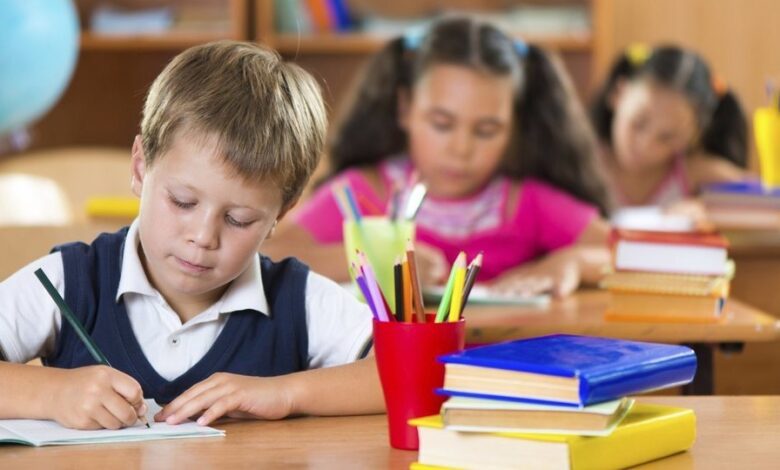The Ministry of Education and Science has presented a draft of the updated State Standard for Primary Education and calls on the public to discuss it

A full-scale war has changed the lives of Ukrainians, but despite the explosions and evacuations, Ukrainian children continue to study. In these conditions, every decision of the Ministry of Education and Science regarding educational policy during the war acquires special significance. Unfortunately, many such decisions are accompanied by scandals, mistrust and loss of connection between the state and society. Selective school closures, confusion with NMT and distance learning, insufficient support for teachers, uncertainty for children with disabilities or from temporarily occupied territories, and other issues cause public outrage and dissatisfaction that decisions are made without the involvement of parents and teachers. Against this background, the Ministry of Education and Science of Ukraine presented for public discussion the draft of the updated State Standard of Primary Education.
What was proposed by the Ministry of Education and Culture in the updated State Standard of Primary Education
Ministry of Education and Science reported on updating the State Standard of Primary Education, inviting educators and parents to join the public discussion. According to the authors, the document responds to the challenges of full-scale war, distance learning, inclusiveness and changed working conditions of teachers. The goal is to organize the content and goals of primary education, increase the effectiveness of education and create new programs based on the modern context.
Compared to the 2018 edition, the proposed standard includes several innovations. First, the standard describes the competence potential of each of the educational fields for the first time. For each of the nine fields — linguistic and literary, mathematical, natural, technological, informatics, social and health care, civic and historical, artistic, and the field of “Physical Culture” — it is determined which competencies the primary school should form. This allows teachers to orient themselves in the value and content orientations of each subject area, better select educational material and formulate tasks in accordance with the expected results.
Second, the document unifies approaches to determining learning outcomes and introduces clearly structured benchmarks for assessment. For each educational field, it is outlined what the signs of successful learning of the material can be, which makes it possible to plan the educational process predictably and consistently. It is also stated that this facilitates the identification of individual learning difficulties and allows timely provision of necessary support to male and female students. As a result, the connection between learning goals, content, assessment and practical achievements of children is strengthened.
Thirdly, the new version of the standard takes into account the linguistic and cultural diversity of the primary school and the specifics of working with children who have special educational needs. The document includes separate requirements for educational results for those who receive education in Ukrainian sign language, foreign sign language, as well as for children who learn languages of national communities. This provision is aimed at formalizing an inclusive approach within the normative field of education.
Fourth, the updated standard does not exist in isolation, but is logically combined with the current standards of basic secondary education (2020) and specialized secondary education (2024). This means that primary school is considered as the first stage of a holistic educational trajectory, and its content is coordinated with the following levels of school education.
Fifth, the proposed document does not provide for a significant restructuring of teaching approaches that are already used in schools. The standard is based on the pedagogical practice that already exists, but at the same time clarifies, structures and systematizes it. Based on it, a typical educational program will be created, as well as new model curricula, which will be applied within the primary level.
Why it’s controversial: An unanswered nag
However, even the most detailed document has no value without a sense of real connection to the needs of children and society. And here the public has a number of serious questions. Can this standard really make a difference in schools operating in basements, displaced learning spaces, under fire, or in conditions of total shortage of personnel? Don’t the new assessment guidelines look like another way to control the teacher instead of giving him autonomy? Do the prescribed changes really take into account the psychological trauma of war children, their anxiety, loss of motivation and need for emotional support?
In conditions where teachers burn out at work, are forced to combine face-to-face and distance learning, and classes in some regions are divided into two or three shifts, a logical question arises: how exactly will the new standard be implemented? Will it not become another formal document that does not correspond to reality?
In addition, the orderliness of the content is good, but where are the guarantees that the training programs that will be created based on it will not repeat the mistakes of previous years? For example, the mechanical transfer of terms, the formulation of “learning through activity” without reinforcement by practice, or the transfer of responsibility for adaptation to the shoulders of teachers.
An important element of the standard is its inclusive component. Finally, for the first time at the document level, there are clear requirements for learning sign language, as well as recognition of the languages of national communities. However, the mere fact of formal recognition does not solve the key problem — the lack of textbooks, manuals, professional translations and trained personnel. The Ukrainian school does not have sufficient infrastructure to provide full education for sign language children or those who study Romanian, Hungarian or Crimean Tatar.
This begs the question: isn’t this inclusiveness just a symbolic gesture? Without funding, teacher training and content creation, it will remain at the level of good intentions.
Participation in public discussion
Discussion of the project will continue until August 28, 2025. You can send your suggestions, comments or remarks in two ways:
– through the eDEM electronic platform;
– or directly to email boxes:
kateryna.taranik-tkachuk@mon.gov.ua
yevhenii.simenyk.mon@gmail.com.





